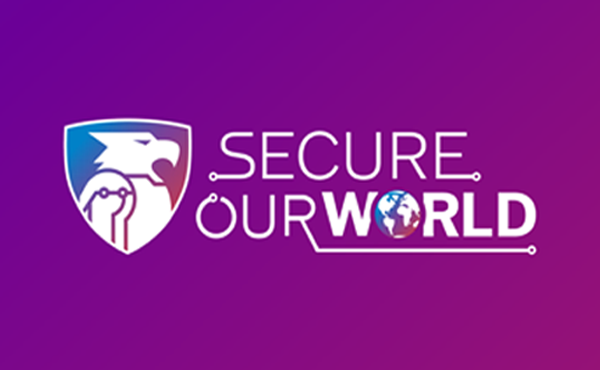
Each October since 2004 has been a time dedicated for all to working together, raising awareness, and ensuring we are doing what we can to, you guessed it, Secure Our World. Taking the month to educate ourselves and learn new ways to protect ourselves and others is a great start, but it’s important to implement these simple practices into your daily routine to keep your security top-notch.
Here are four simple steps that you can incorporate into your daily routine that will positively impact your digital world:
1. Use Strong Passwords
- First, make them long. CISA suggests that passwords should be at least 16 characters long. The longer the password, the stronger it is.
- Second, make them random. One way to create a random password is by using a memorable phrase, known as a “passphrase.” CISA recommends using 4-7 unrelated words if you prefer this method. Another approach is to create a random string that includes a mix of letters, numbers, and symbols. Remember, spaces are also usable in your passwords!
- Third, ensure each password is unique. From email to banking, social media to your computer, keep them different and unrelated.
With so many accounts requiring passwords, it can be difficult to remember them all. CISA recommends using a password manager. These tools can help you keep track of your passwords, notify you if you’ve reused one, and even assist you in creating new passwords.
For more information and examples of strong passwords, check out CISA's Password Tip Sheet!
2. Turn On Multifactor Authentication
Turn on Multifactor Authentication (MFA) for each app and account that offers it. How, you may ask?
Go to your settings, specifically your account settings (the exact name may vary). Within the settings, you should see an option to enable MFA or two-factor authentication. Once selected, you’ll need to confirm your choice and choose how you want to complete the MFA. Common methods include an authentication app, biometrics, or a text code.
For more in-depth information, check out CISA's MFA Tip Sheet!
3. Recognize & Report Phishing
When it comes to phishing, keep three things in mind: Recognize, Resist, and Delete.
Recognize common signs of phishing: urgent or emotional language, requests for personal or financial information, untrusted shortened URLs, and incorrect email addresses or links (like goagle.com). Phishing communications often contain poor grammar or misspellings, though AI is making this less common.
Resist the temptation to click on links. Avoid clicking if an offer seems too good to be true or if the email is from someone you don’t recognize. Always report the message as spam.
Lastly, Delete the message. Don’t click on anything, even to unsubscribe!
For more in-depth information, check out CISA's Phishing Tip Sheet!
4. Update Software
Our devices usually notify us when updates are available. These updates often include essential security patches, so watch for notifications, especially for web browsers and antivirus software. Install updates as soon as possible, and, when feasible, enable automatic updates to minimize your workload. Updates can also include performance improvements and bug fixes, so why wait?
For more information, check out CISA's Software Updates Tip Sheet!
By implementing these four easy practices into your daily routine, you can contribute to Securing Our World. Share these best practices with your friends and coworkers, and let’s work toward a secure world for everyone. For information on how working with Rhyme Managed IT ensures your business networks are covered click here!
For more fun cybersecurity-related activities, check out below CISA’s Cybersecurity Bingo or puzzles!
CISA's Tip Sheets:
Four Easy Ways to Stay Safe Online
CISA's Other Fun Activates: